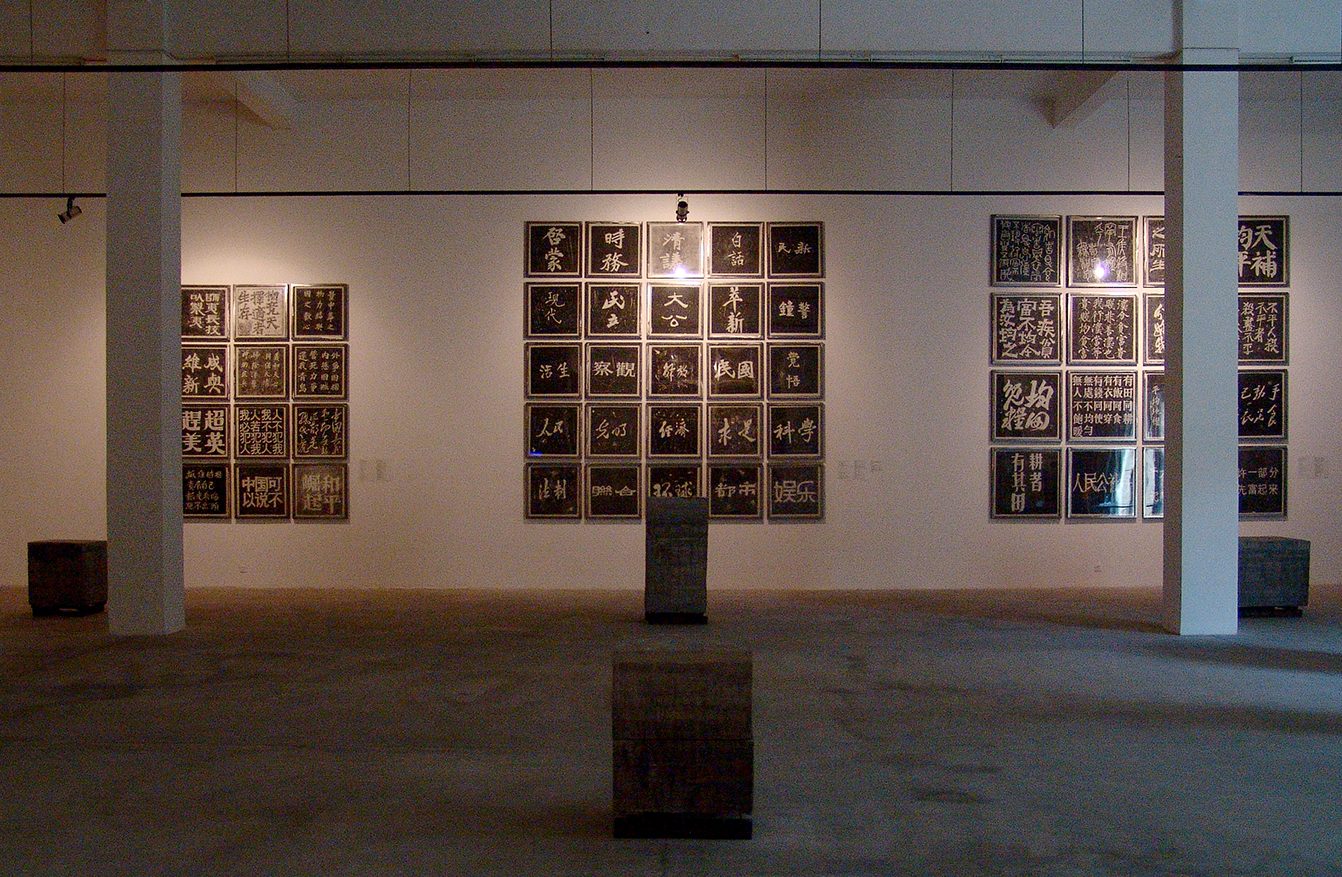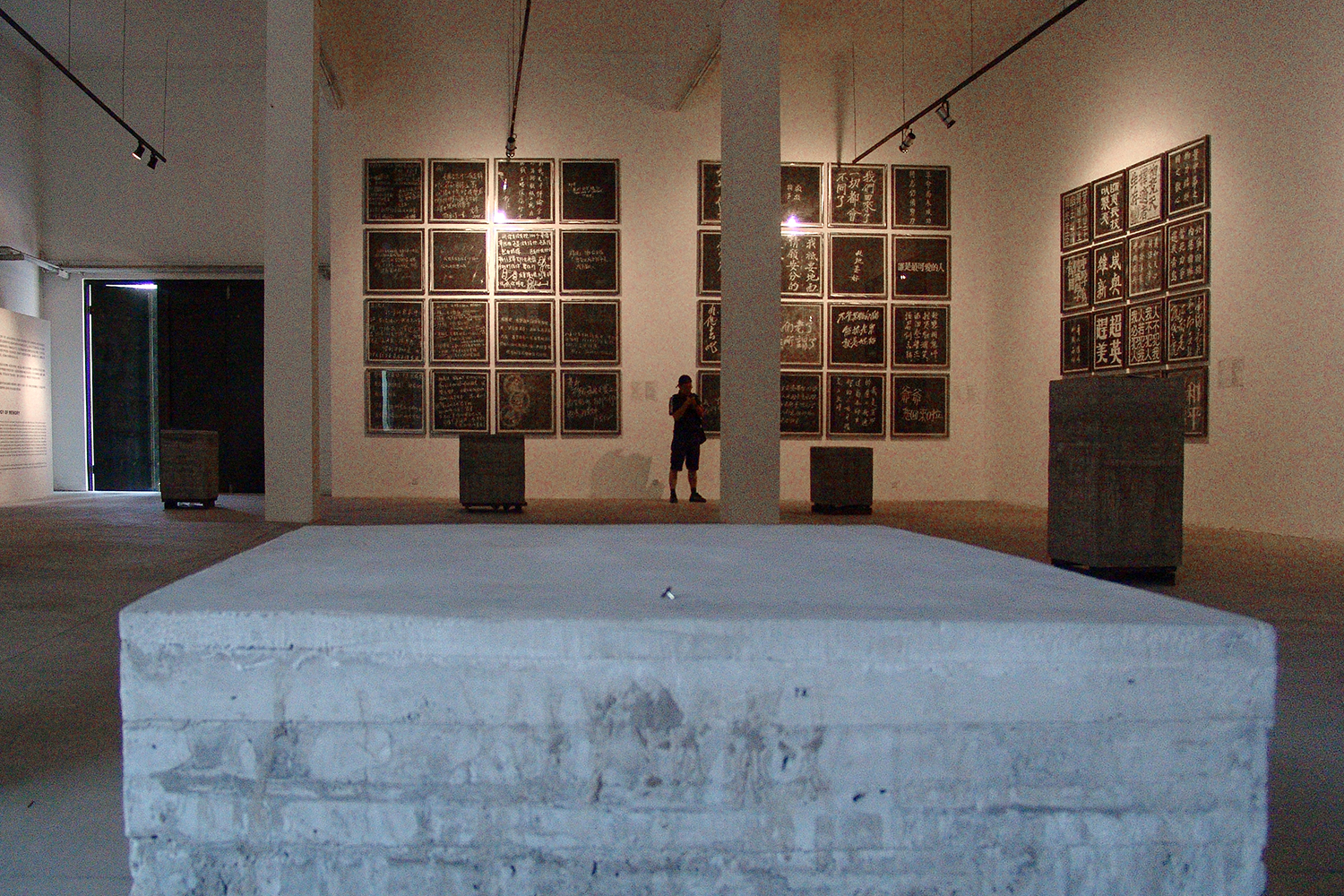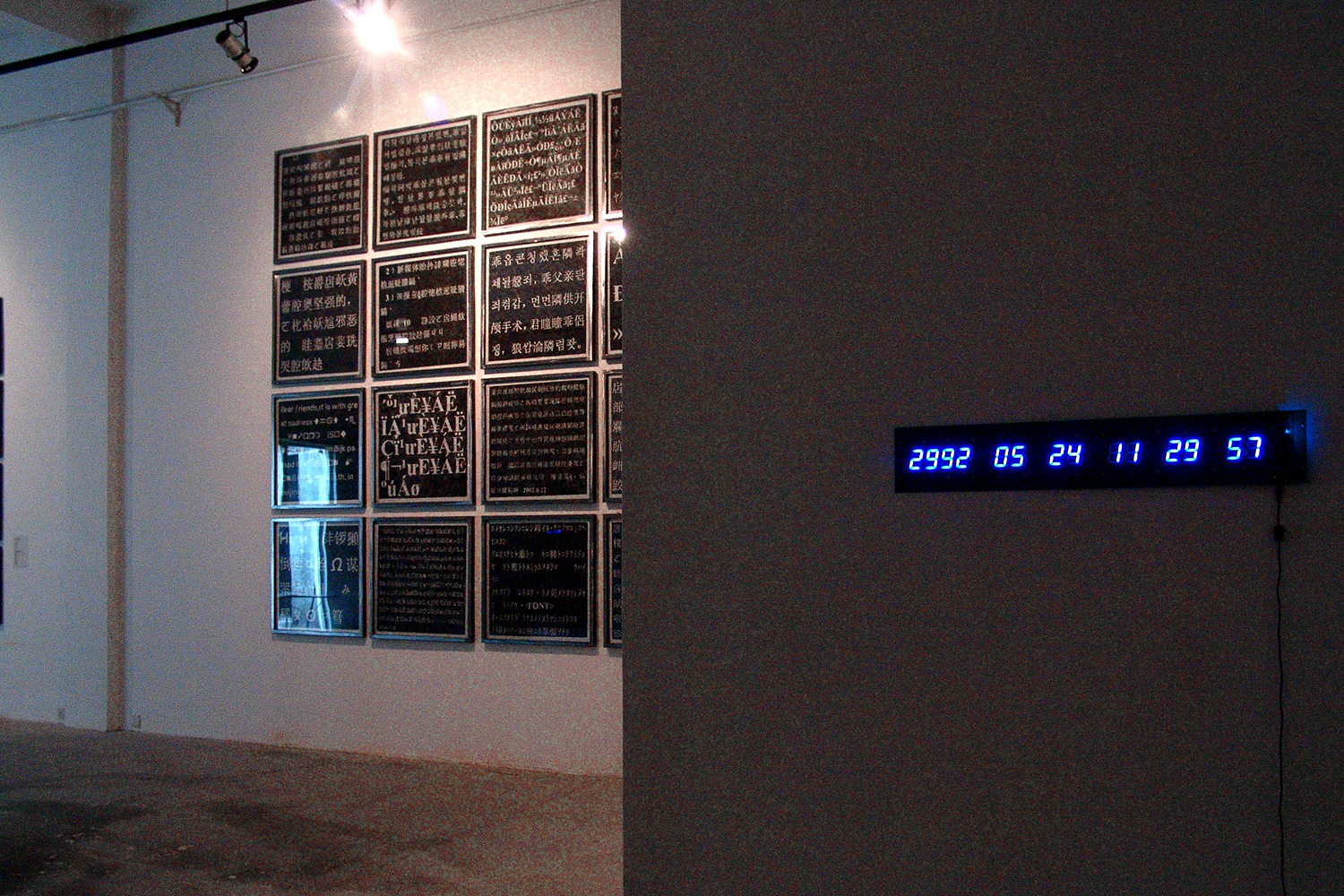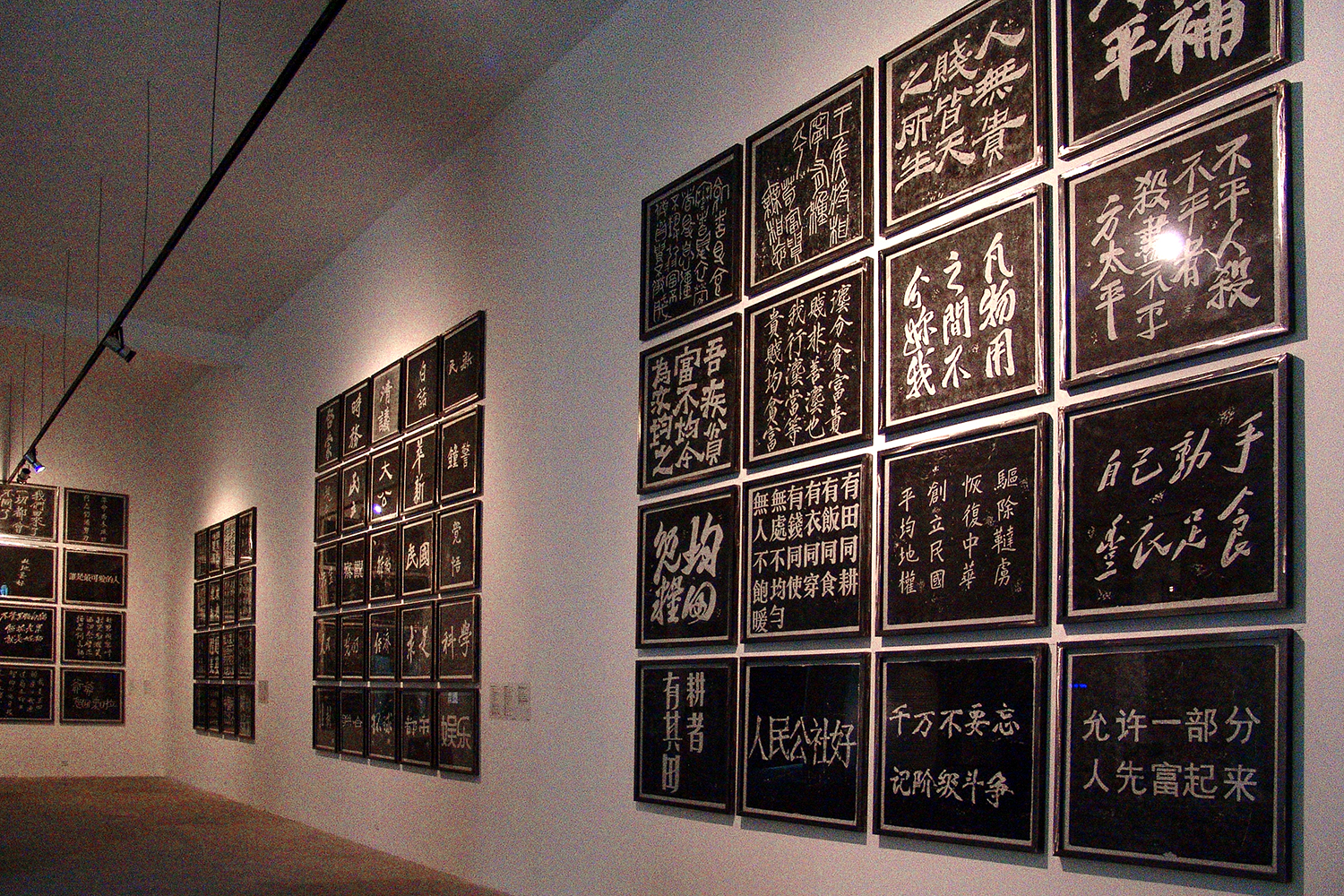25000 TAGS
Qiu Zhijie: Archeology of Memory
Location: Long March Space, Beijing (formerly known as 25000 Cultural Transmission Center)
Duration: June 7 – August 12, 2007

The Qiu Zhijie solo exhibition, “Archeology of Memory”, will be held in 798 Long March Space on July 7, 2007. It will be the artist’s first solo exhibition in Beijing since year 2004.
The exhibition is composed of a large-scale installation work entitled “Monuments” which the artist has worked on from 2006-2007.
From a spatial dimension, the work covers both public discourse and individual codes; temporally, it spans the re-examination of historical narratives to contemporary vocabulary. The artist has indefatigably carved words and sentences that haunt the collective and individual memory onto the concrete monuments – as if to solidify these memories into permanence. But, he then the covers the epigraph with another layer of concrete, and continues this process – layer by layer – until the epigraph is sealed and every single layer is covered by another concrete layer. Finally, only simple, concrete, cube sculptures remain, their stained sides giving them the appearance of having been excavated from an archaeological dig themselves. Yet, it is difficult to associate these concrete cubes as containers of memory.
The work includes words, phrases, and sentences extracted from political ideas, newspaper headlines, revolutionary slogans, mottos, handwritings, pop song lyrics, private letters, and even unrecognizable computer codes, examining the movement and linkages between the concepts of public to private. Starting from public historical knowledge and history (commonly found in middle and high school textbooks), to a middle ground between individual experience and public knowledge, reaching individual and personal information, and finally, collapsing into unrecognizable codes that are too individualistic to understand yet become public image. This paradox proposes a complicated relationship between public memory and private memory. Through an examination of the different texts and the adoption of their writing styles, this installation can be considered an in depth study of calligraphic history and character graphology, which is the intersection of histories of individual pursuit and histories of ideology.



The Qiu Zhijie solo exhibition, “Archeology of Memory”, will be held in 798 Long March Space on July 7, 2007. It will be the artist’s first solo exhibition in Beijing since year 2004.
The exhibition is composed of a large-scale installation work entitled “Monuments” which the artist has worked on from 2006-2007.
From a spatial dimension, the work covers both public discourse and individual codes; temporally, it spans the re-examination of historical narratives to contemporary vocabulary. The artist has indefatigably carved words and sentences that haunt the collective and individual memory onto the concrete monuments – as if to solidify these memories into permanence. But, he then the covers the epigraph with another layer of concrete, and continues this process – layer by layer – until the epigraph is sealed and every single layer is covered by another concrete layer. Finally, only simple, concrete, cube sculptures remain, their stained sides giving them the appearance of having been excavated from an archaeological dig themselves. Yet, it is difficult to associate these concrete cubes as containers of memory.
The work includes words, phrases, and sentences extracted from political ideas, newspaper headlines, revolutionary slogans, mottos, handwritings, pop song lyrics, private letters, and even unrecognizable computer codes, examining the movement and linkages between the concepts of public to private. Starting from public historical knowledge and history (commonly found in middle and high school textbooks), to a middle ground between individual experience and public knowledge, reaching individual and personal information, and finally, collapsing into unrecognizable codes that are too individualistic to understand yet become public image. This paradox proposes a complicated relationship between public memory and private memory. Through an examination of the different texts and the adoption of their writing styles, this installation can be considered an in depth study of calligraphic history and character graphology, which is the intersection of histories of individual pursuit and histories of ideology.




